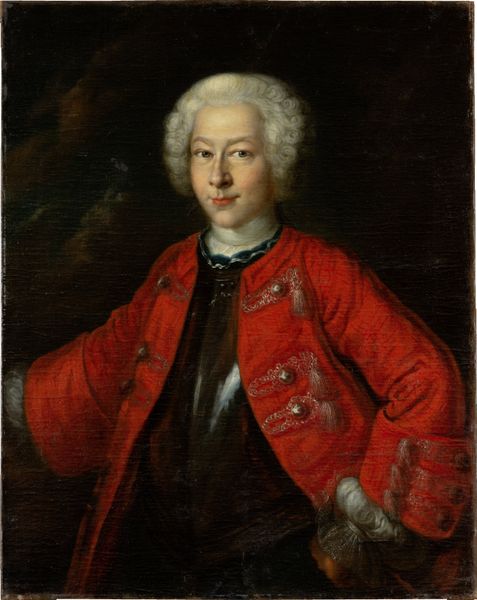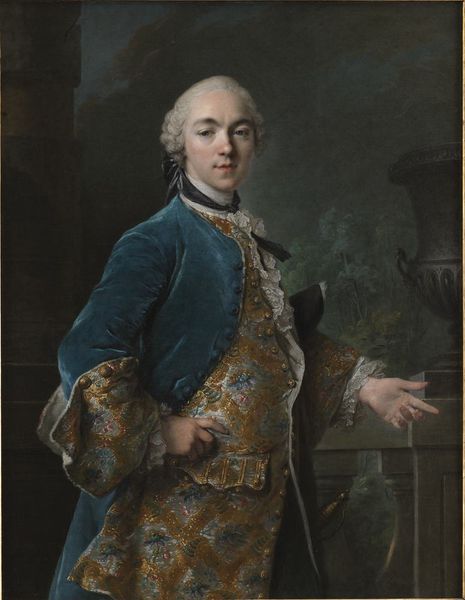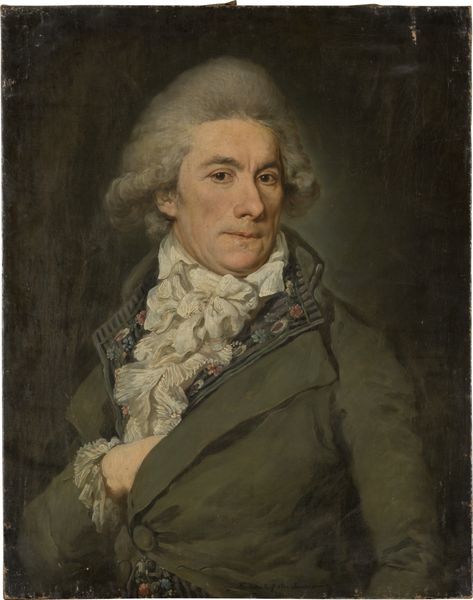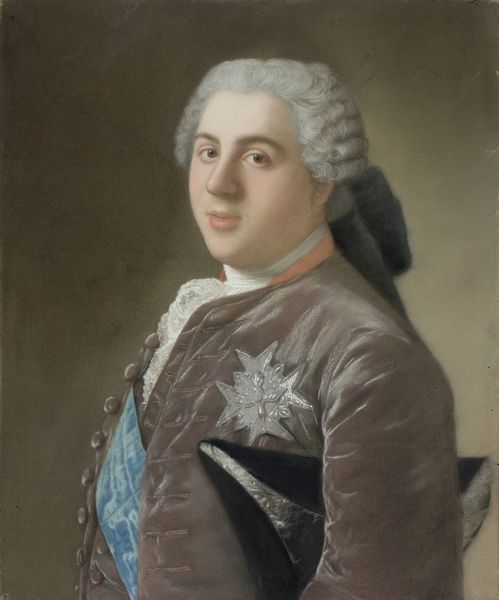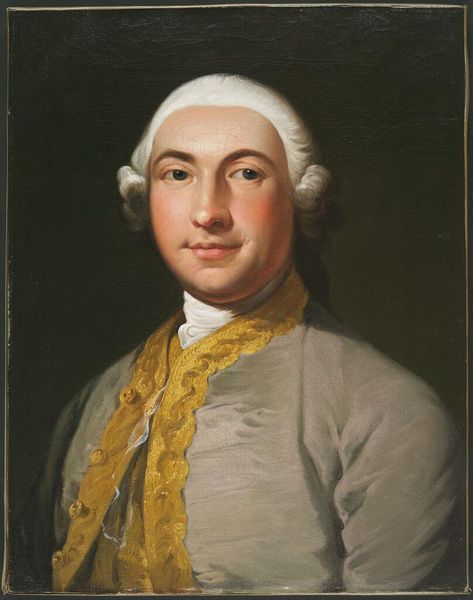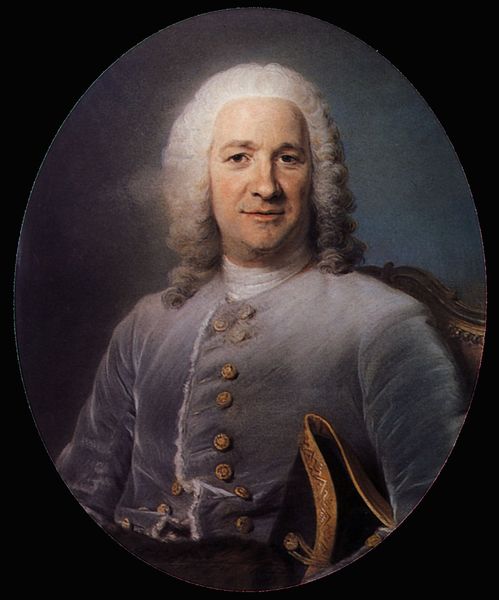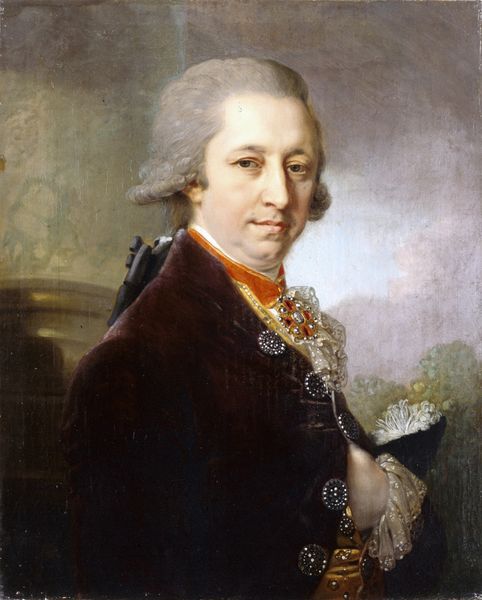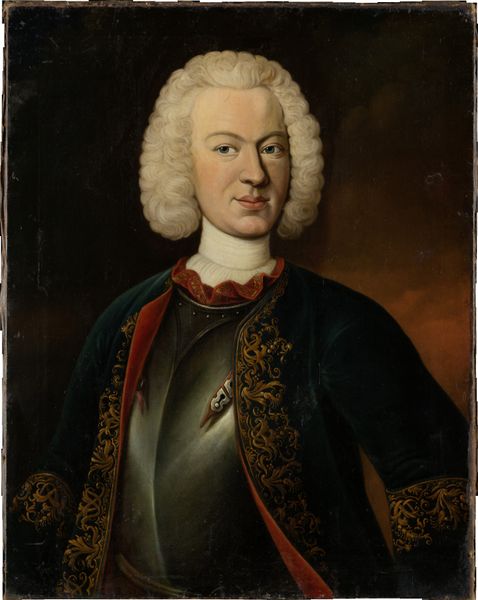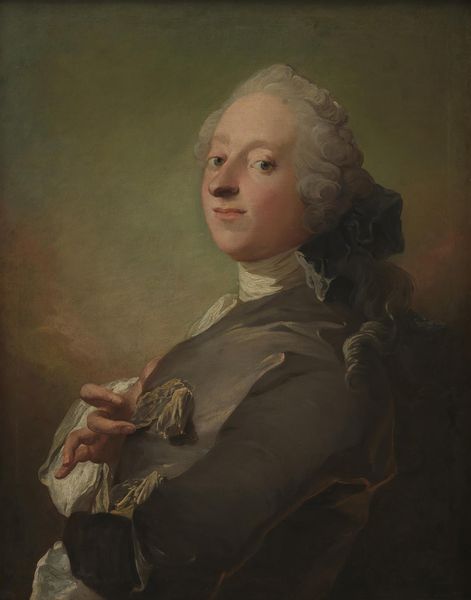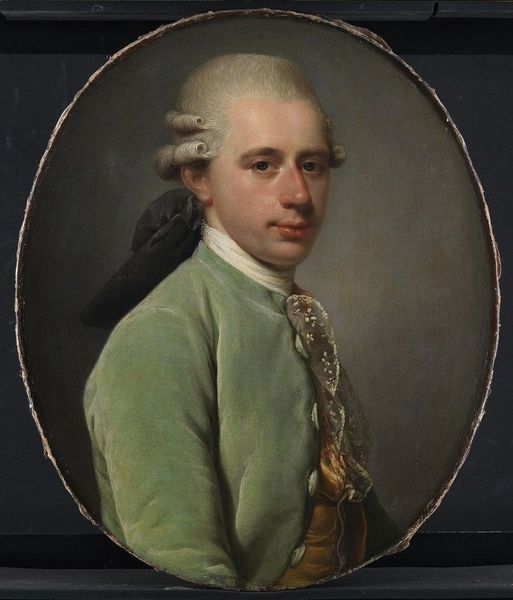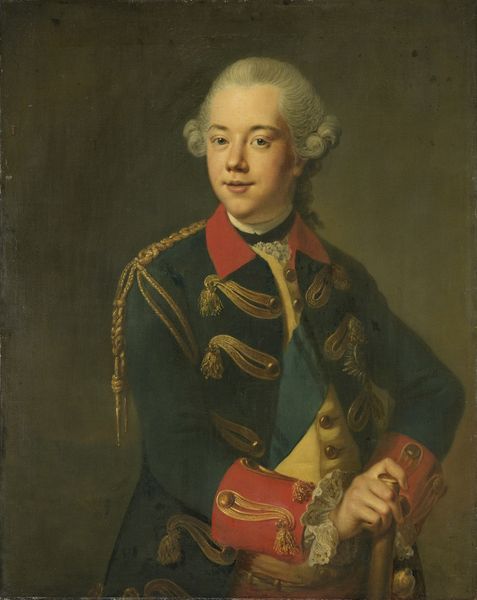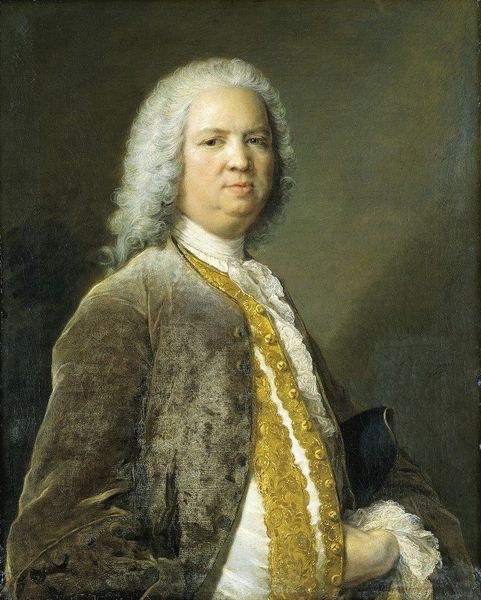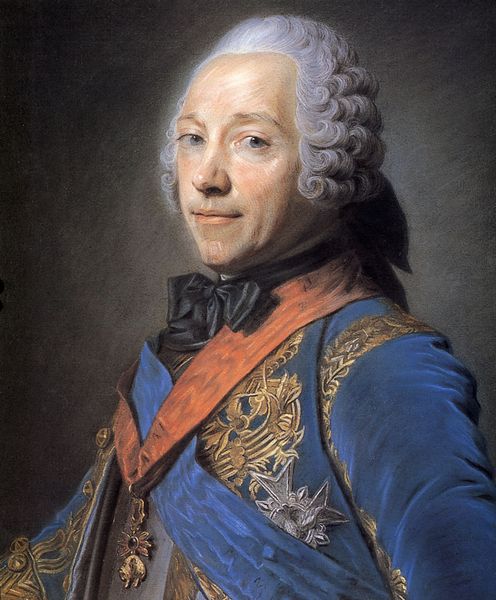
painting, oil-paint, oil
#
portrait
#
baroque
#
painting
#
oil-paint
#
oil
#
history-painting
#
academic-art
Dimensions: 55.1 x 39.1 cm
Copyright: Public Domain
Curator: Looking at this portrait, I’m immediately drawn to the sumptuousness of the materials. That velvet coat, the sheen of the gold embroidery – it speaks volumes. Editor: Indeed! We're viewing a portrait of Hieronymus Georg von Holzhausen, dating from roughly 1745 to 1755, currently held here at the Städel Museum. What strikes you about its place in the context of its time? Curator: For me, it’s how the painter uses oil on canvas to mimic the textures of status. Consider the likely labor behind the embroidery – not just its execution but also the materials themselves: the silk threads, the gold, likely acquired through trade networks supported by... less-than-equitable labor practices. Editor: Absolutely. This was the era of burgeoning global trade and the consolidation of power in aristocratic circles. Portraits such as these played a significant role in projecting power. Notice the soft, flattering light—typical of Baroque portraiture—aiming to idealize rather than realistically represent von Holzhausen. What does that idealization communicate? Curator: I'm thinking of what that painterly manipulation elides; how it conceals. What sort of socio-economic structures were in play to enable an individual to sit for a lavish portrait? We also see what it omits: the labor practices of the enslaved workers, the indentured servants, or the farmers whose work provided the basis of the wealth on display. Editor: I see your point, and it brings another question into the limelight: How do museums—institutions with their own complex histories—play into these politics of display today? We are implicated in the interpretation of this work in the present and responsible for broadening this view. Curator: Precisely! This portrait allows us to ask challenging questions, about whose stories are told, who has access to art education, and ultimately who is deemed worthy of immortalization, especially when considering how the cost of labor informs value. Editor: A point well made. Viewing through that material and historical lens reminds us that art never exists in a vacuum but reflects the economic and socio-political realities of its creation and display. Curator: And by examining those realities we begin to grasp our own, perhaps reshaping them in the process.
Comments
No comments
Be the first to comment and join the conversation on the ultimate creative platform.
